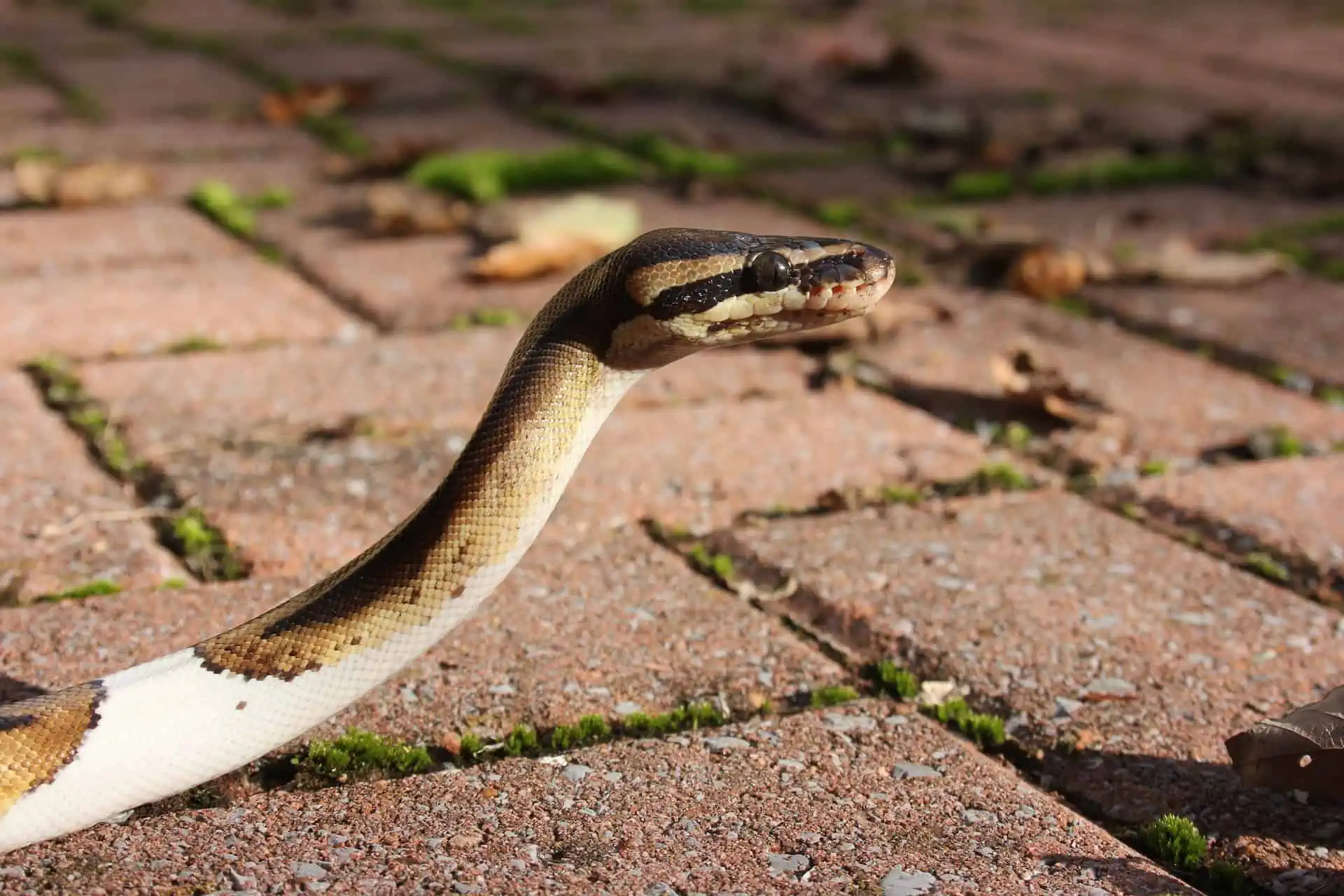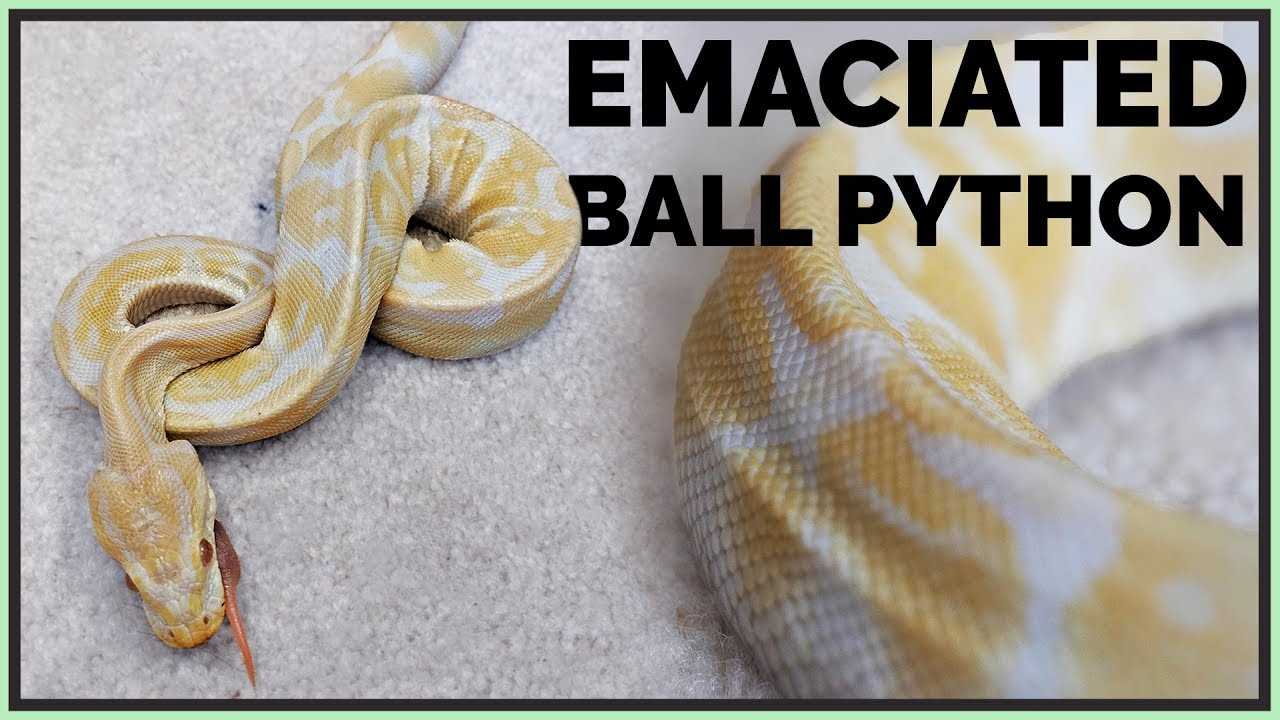There are several reasons why a ball python may become underweight. One common cause is improper feeding. Ball pythons require a diet that consists primarily of small rodents, such as mice or rats. If a python is not being fed a proper diet, it may not be getting enough nutrients, leading to weight loss. Additionally, overfeeding can also be a problem, as it can result in obesity or other health issues.
In addition to proper feeding, it is crucial to provide a suitable habitat for your ball python. This includes maintaining appropriate temperature and humidity levels, as well as providing hiding spots and other enrichment. A comfortable and stress-free environment can greatly contribute to your snake’s overall well-being and weight gain.
Common Causes of Underweight Ball Pythons

1. Inadequate Nutrition
One of the most common causes of underweight ball pythons is inadequate nutrition. The diet of a ball python should consist primarily of small mammals, such as mice or rats. If the snake is not receiving enough food or if the food is not nutritionally balanced, it can result in weight loss and malnourishment.
2. Stress or Illness
Stress or illness can also cause a ball python to become underweight. When a snake is stressed or not feeling well, it may refuse to eat or have a decreased appetite. This can lead to weight loss and a decline in overall body condition.
3. Improper Husbandry
Improper husbandry practices, such as incorrect temperature and humidity levels in the enclosure, can affect a ball python’s ability to digest food properly. If the snake’s environment is not suitable, it may not be able to absorb the necessary nutrients from its food, leading to underweight and malnourishment.
4. Parasites

Parasites, such as internal worms, can also contribute to weight loss in ball pythons. These parasites feed off the nutrients in the snake’s body, depriving it of its essential nutrients and causing weight loss and weakness.
5. Breeding or Egg Production
Recognizing the Signs of an Underweight Ball Python
One of the most noticeable signs is a visible thinness or emaciated appearance. A healthy ball python should have a firm and muscular body, with a noticeable weight to their body when you hold them. If the snake feels light or weak when handled, it may be underweight.
Another sign to look out for is a lack of muscle definition. A malnourished ball python may have a clearly visible loss of muscle mass, particularly along their body and tail. Instead of a firm and filled-out appearance, an underweight snake may appear thin and bony.
In addition to physical signs, an underweight ball python may also show behavioral changes. They might become lethargic and less active, spending more time hiding or curled up in their enclosure. They may also exhibit a reduced appetite, refusing to eat or only consuming small amounts of food.
If you suspect that your ball python is underweight, it is essential to seek veterinary attention. A qualified reptile veterinarian can assess the snake’s condition and provide guidance on how to help them regain a healthy weight. They may recommend dietary changes, nutritional supplements, or additional medical treatments depending on the specific needs of your snake.
Steps to Help Your Underweight Ball Python Gain Weight
The first step in helping your underweight ball python is to ensure that they are in a suitable enclosure with appropriate temperature and humidity levels. Stressors such as improper temperatures or inadequate humidity can contribute to a loss of appetite and weight loss in ball pythons.
Next, evaluate your python’s diet. A proper diet is essential for maintaining a healthy body mass. If your snake is underweight, it may not be receiving the necessary nutrients it needs to thrive. Consult with a reptile veterinarian or an experienced reptile keeper to ensure that you are feeding your ball python a species-appropriate diet and the correct size prey items.
Consider increasing the frequency of feedings for your underweight python. Instead of feeding your snake once every one to two weeks, offer smaller meals more frequently. This can help your snake consume more calories and gradually gain weight.
If your python is refusing food or has a decreased appetite, try offering different food options to entice them. Some underweight ball pythons may find live prey more appealing than frozen-thawed prey. Experiment with different food types and presentations to find what works best for your snake.
In addition to adjusting the diet, you may need to provide supplemental feeding to help your underweight python gain weight. This can include offering high-calorie foods, such as newborn mice or rats, or adding nutritional supplements to their meals. Again, consult with a reptile veterinarian or an experienced reptile keeper for guidance on the best approach.
Lastly, monitor your python’s progress closely. Weigh your snake regularly to track their weight gain, and continue to provide them with proper care and attention. It may take some time for your underweight ball python to reach a healthy weight, so be patient and persistent in your efforts.
Remember, preventing underweight in ball pythons is always preferable to dealing with the issue after it arises. Providing a suitable environment, a balanced diet, and regular veterinary care are key to maintaining your ball python’s health and ensuring they maintain a proper body mass.
Preventing Underweight in Ball Pythons: Tips for Proper Care
Proper care and attention are essential for maintaining a healthy weight in ball pythons. By following these tips, you can help prevent your python from becoming underweight:
1. Provide a Nutritious Diet
- Offer a variety of food items to ensure a balanced diet for your ball python.
- Feed appropriately sized prey items, taking into account the size and age of your python.
- Ensure that the prey items are of high quality and have been properly stored and handled.
2. Monitor Eating Habits
Pay close attention to your ball python’s eating habits to ensure that it is consuming an adequate amount of food. If you notice a decrease in appetite or a refusal to eat, consult with a veterinarian to rule out any underlying health issues.
3. Provide a Proper Environment
- Ensure that the temperature and humidity levels in the python’s enclosure are appropriate for its species.
- Provide hiding spots and branches for climbing, which will help stimulate natural behavior and exercise.
- Regularly clean the enclosure to maintain a clean and stress-free environment.
4. Regular Veterinary Check-ups
Bring your ball python to a reptile veterinarian for regular check-ups. They can assess its overall health and make any necessary recommendations for diet and care.
5. Handle with Care
- Avoid excessive handling, as it can cause stress to the python and disrupt its feeding routine.
- When handling, make sure to support its body properly to prevent any injuries.
By following these guidelines, you can ensure that your ball python remains healthy, maintains a proper weight, and avoids becoming underweight or malnourished.

I’m Lena Adams—a product of an unconventional upbringing in the African wilderness. My father, a daring explorer of African wildlife, sparked my fascination with reptiles, a passion that intertwined with the tragic loss of my mother during an expedition, leaving an indelible mark on my life. Driven to understand the creatures that captivated my parents, I embarked on my journey, sharing insights about reptiles, frogs, and lizards on my website. Through my explorations and conservation efforts, I honour my family’s legacy while seeking connections—to the creatures, nature, and the mother whose presence I yearn to understand.
